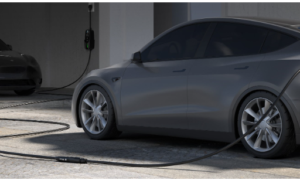Electric vehicles (EVs) are gaining popularity as more people embrace sustainable transportation options. As a result, workplaces are recognizing the importance of providing EV charging stations for their employees. While the majority of EV charging happens at home, employees without access to a home charger rely on workplace or public charging stations to keep their vehicles powered up. In fact, according to PlugInAmerica’s 2023 EV Driver Survey, over a quarter of EV drivers reported using a workplace charger weekly, while nearly another quarter used it daily.
The number of workplace EV chargers in the United States has been steadily increasing. Statista reports that between the fourth quarter of 2019 and the first quarter of 2021, the number of workplace EV chargers in the country grew by 28%. This growth is expected to continue as the International Council on Clean Transportation predicts that in order to support the projected 26 million EVs on US roads by 2030, 1.3 million workplace EV charging stations will be required nationwide, in addition to another 1 million public charging stations.
The Benefits of EV Charging at the Workplace
Supporting Corporate Sustainability Efforts
As employees become more environmentally conscious, they prioritize working for companies with sustainability initiatives. According to Deloitte’s Global 2022 Gen Z and Millennial Survey, climate change is a top concern for Gen Z and Millennials, and nearly two in five have turned down job offers that did not align with their personal ethics. By providing EV charging stations at the workplace, employers can attract and retain environmentally-conscious employees, future-proof their workplaces, and reduce CO2 emissions. This move towards sustainability can also lead to higher employee satisfaction and loyalty, as employees who are satisfied with their companies’ impact are more likely to stay for more than five years.
Meeting the Needs of EV-Driving Employees
There are three primary reasons why drivers are switching to electric vehicles: sustainability, lower total cost of ownership, and exciting technology. EV drivers can save significant amounts of money on fuel and maintenance costs. Furthermore, EV owners may qualify for tax credits, such as the $4000 used EV tax credit or the $7500 new EV tax credit. With the average EV range exceeding 250 miles, EV drivers can easily top off their charge while parked at work, reducing the stress of running out of battery. By providing dependable workplace charging stations, employers can alleviate this concern and contribute to their employees’ peace of mind.
Commuter Benefits and Take-Home Vehicles
Offering EV take-home vehicles or commuter benefits can be an attractive option for businesses looking to promote sustainability. Some companies provide benefits to employees who purchase or lease an electric vehicle, aligning with their commitment to the environment. Commuter benefits, including EV charging options, can lead to decreased frustration, improved affordability, and heightened environmental awareness. This strategy has been exemplified by the City of Easthampton, Massachusetts, which not only offers free EV charging to employees but also provides electric vehicle adoption benefits. This approach helps the city meet its net-zero carbon emissions goals and allows employees to claim federal and state incentives, potentially saving millions on gas annually.
Essential Considerations for EV Charging at the Workplace
Planning for the Transition
Implementing EV charging at the workplace requires careful planning. Before installing EV charging stations, it is crucial to assess the current electrical capacity and consult with an electrician. While Level 2 chargers are relatively easy to install, some buildings may require electrical upgrades to accommodate new circuits. The United States Department of Energy’s Clean Cities Coalition Network recommends municipalities host employer workshops to promote workplace charging adoption. The Workplace Charging Employer Workshop Toolkit can help facilitate participation and assist companies in developing effective strategies.
Resources and Guides for Implementation
Various resources and guides are available to support the implementation of workplace charging programs. The Department of Energy offers a Federal Workplace Charging Program Guide, complete with a calculator for estimating electricity consumption for federal electric vehicles. Additionally, the City of Boston provides a comprehensive guide on starting an electric vehicle workplace charging program. The Alternative Fuels Data Center, part of the Department of Energy, also offers a guide for workplace charging programs. This guide covers important aspects such as charger administration, access, enforcement, security, registration, liability, station sharing, reservations, time limits, and potential pricing considerations.
Funding Assistance for EV Charging
To encourage businesses to adopt EV charging programs, various government incentives and tax credits are available. The federal government’s Alternative Fuel Infrastructure Tax Credit provides a tax credit of up to 30% or $100,000 for the installation of EV charging stations in approved census tracts. Additionally, many states and municipalities offer their own tax incentives to support businesses in covering the cost of EV charging equipment installation.
Conclusion
Providing EV charging stations at the workplace is not only an investment in sustainability but also a way to attract and retain environmentally-conscious employees. With the increasing popularity of electric vehicles, workplace charging will become an essential employee benefit. By offering EV charging options, businesses can support their employees’ transportation needs, reduce CO2 emissions, and contribute to a greener future. With the help of resources, guides, and funding assistance, businesses can easily implement workplace charging programs and reap the benefits of a sustainable and employee-centric workplace. So, why wait? Start planning your EV transition today and join the movement towards a cleaner and more sustainable future.


































